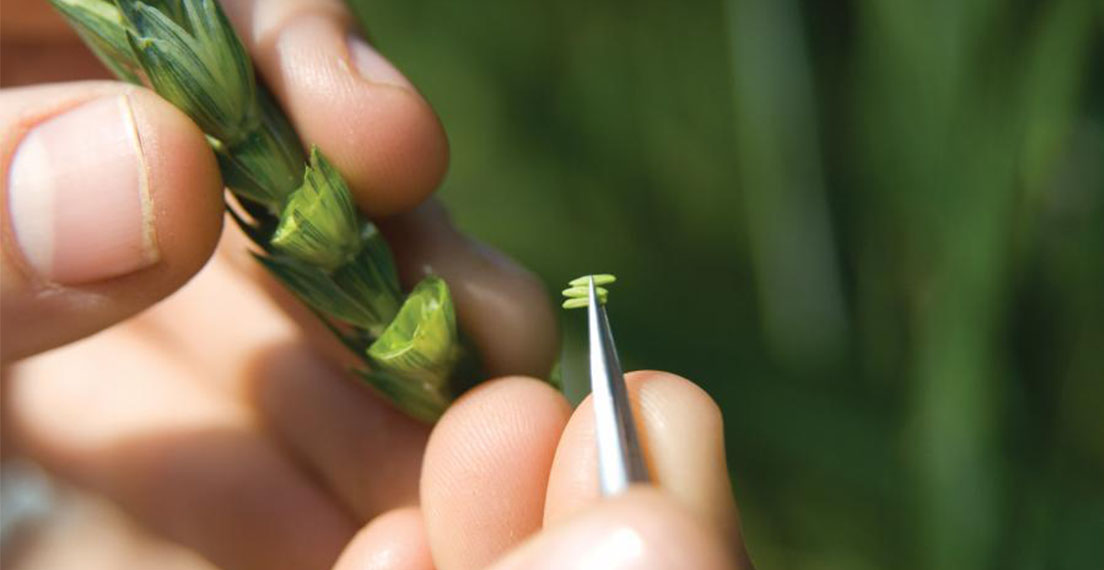Modern plant breeding uses a variety of techniques but the basic aim of all of them is to generate new genetic diversity and then select for plants with the most desirable traits.
Genetic improvement achieved through plant breeding has been a central pillar of improving agricultural productivity for thousands of years, the below table summarises some of the main improvements brought about by breeding in major arable crops to date.
|
Trait |
Wheat |
Barley |
Oats |
Oilseed rape |
Field beans |
Field peas |
Forage maize |
Herbage |
Sugar beet |
|
Increase harvestable yield |
Increase by 0.7t/ha decade since 1980 |
92% increase in W.B & 87% in S.B since 1982 |
Improve harvest index and no. grain per sq. metre |
0.5t/ha increase per decade since 1980 |
Little increase seen in last 10 years |
Little increase seen in last 10 years |
Focus on DM and starch yield |
Focus on DM yield |
Faster increase than any UK arable crop since 1980 |
|
End use quality |
Bread making quality |
Low β-glucan levels, low β-amylase |
Naked oats, oil content |
Decrease glucosinolate & fibre |
Reduce tannins, amino acid content |
|
Digestibility, energy content |
Sugar content |
|
|
Resistance to disease |
Eyespot, Sept., rust |
Mildew, rust, Rhyncho., Ramularia, Net blotch |
Rust, mildew |
LLS, stem canker |
Leaf and pod spot |
Pea wilt, Downy mildew |
Eyespot |
Mildew, Rhyncho., rust |
AYPR |
|
|
|
|
Verticillium, Alternaria |
Ascochyta, blight, rust |
P. mildew, Ascochyta |
Fusarium |
|
BMYV, BYV |
|
|
Resistance to pests |
OWBM |
Aphid, BYDV |
Little work |
TuYV |
Stem nematode resistance |
Little work carried out |
Corn borer resistance |
Little work |
BCN tolerance |
|
Aphid, BYDV |
|||||||||
|
Adaption to env. extremes |
Drought traits identified |
Drought traits identified |
Little work |
Little work |
Traits identified |
Traits identified |
QTLs found |
Drought tolerant |
Traits identified |
|
Impact in market place |
Work in progress / development required |
Examples of the impact plant breeding has had on specific traits in major arable crops adapted from a 2015 ADAS Review of Plant Breeding Objectives
The establishment of new varieties through plant breeding is a lengthy process with average times for varietal development ranging from six to fifteen years. In order to achieve marketable status varieties must undergo vigorous testing to determine their distinctness and value in order to enter onto the National List. National List varieties then undergo further evaluation in independent trials with the best performing varieties being published onto recommended and descriptive lists which provide the main source of detailed variety information for growers, advisers and end-users.
Recommended and descriptive lists for crop varieties in the UK are published by AHDB for cereal & oilseed and herbage crops, NIAB for forage maize, PGRO for pulse crops and BBRO for sugar beet.
Major plant breeding organisations with operations in the UK include DSV, KWS, Limagrain, Elsoms Seeds, Syngenta, RAGT, LSPB, Bayer, Senova and Saaten Union.






